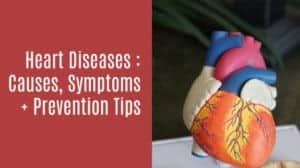When you feel down about your relationship, quotes about love and life can deliver the pick-up you need. Inspirational words boost us and make us think about our lives and the direction we must take in life. There are many wonderful and awe-inspiring actors out there. One such man is Tom Hanks.
Tom Hanks is one of the most beloved actors of our day. From castaway to Forrest Gump to Mr. Rogers, Tom Hanks has graced our screens and shared his wisdom since the late 80s. As actors go, Tom Hanks shows great passion for his job. Furthermore, he can morph into characters with as much ease as all the greatest actors.
Tom Hanks gives his fans wisdom and hope on and off the silver screen. Tom Hanks has always been an inspiration to a generation, and his quotes about love are genuine and beautiful. Mr. Hanks carries himself with positivity and poise. Quite frankly, the world is a better place for him and his influence.
Tom Hanks’s thoughts on and quotes about love and life are admirable. The way he captures the image of and how he quotes about love are phenomenal.
Here are 21 Tom Hanks quotes about love and life.
1 – “Never give up because you never know what the tide will bring in the next day.”
You never know what will happen in life, so don’t give up. Even when the road is the darkest, make goals and plans to keep you motivated.
2 – “If you’re funny, if there’s something that makes you laugh, then every day’s going to be okay.”
Laughter is the best medicine, even in the darkest of hours. So find joy in humor.
3 – “From now on, we live in a world where man has walked on the Moon. It’s not a miracle; we just decided to go.”
Those who try hard in life perform personal miracles every day. The moon landing was a goal and not an eventuality. Without a dream and perseverance, we may never have landed a ship there.
4 – “If it weren’t hard, everyone would do it. It’s the hard that makes it, great.”
Good things never come to those who want something for free. Work hard and reap the rewards. Always strive to do your best!
5 – “Even the simplest choice can make a jaw-dropping difference in our world.”
Take care in all that you do–a kind word or action might go far. You never know who you are helping. The child in need may be the one who cures cancer one day. Random acts of kindness have long-lasting reaches that go beyond comprehension.
6 -“You learn more from getting your butt kicked than getting it kissed.”
Sometimes you have to let yourself be kicked to see what needs to change in your life. Force yourself to push through the fear and see be the change.
7 – “It was a million tiny things that, when you added them all up, they meant we were supposed to be together… and I knew it.”
~A quote about love from Tom Hanks to his wife, Rita.
Love is a process and a journey, not a race. Note the little things that build your relationship and strengthen it. Do not lose sight of the reason you fell in love in the first place.
8 – “There’s no substitute for a great love who says, ‘No matter what’s wrong with you, you’re welcome at this table.’”
Open your heart to all, and good feelings will flow through you. A lonely person needs love as much as you do. We all need that one great love in our lives. Love completes us.
9 – “Reach for the sky!”
~Tom Hanks voicing the character of Woody in Toy Story
Set your goals. Then, don’t settle for anything less. Pursue your dreams despite the odds that you face.
10 – “Help, and you will make a huge impact in the life of the street, the town, the country, and our planet.”
A single act of caring creates a ripple that comes back to you. You don’t know who that person in need truly is. You haven’t walked their journey. Reach out and help those in need, and that kindness will find its way back to you.
11 – “The Pixar people continuously amaze me. They come up with something that actually looks as though it takes place in this happy, real-world. Every plotline is not just plausible, but oddly authentic. The stories are full of adventure, humor, and love. The characters are written with great human dimension. I don’t know how they do it, but they astound me.”
Movies and art make for a beautiful life. Feeling through art is air to the soul and warmth to the heart. Open your mind, and appreciate art.
12 – “All I can do is bow down before the courage of my wife.”
Sometimes you have to let someone else take the wheel and lead the direction for you to lead your most authentic life. Our partners are our copilots, and we need to allow them to show us the path when darkness overtakes our lives.
13 – “The success of our relationship was a matter of timing, maturity, and our willingness to have an intimate connection. When I married Rita, I thought, ‘This is going to require some change on my part.’”
Change is for the good, but love is for the better. When you marry, two become one, and you will always face compromised to succeed and grow in love. But also remember that we grow from change.
14 – “Some people go to bed at night thinking, ‘That was a good day.’ I am one of those who worries and asks, ‘How did I screw up today?’”
We all mess up in life, but it’s about what you do tomorrow that is important. Tomorrow is always a second chance to make a change. Be positive, and good will come to you.
15 – “There’s millions of survivors out there make it one million and one.”
We are not alone in this world. There is someone out there who has lived a life as hard as your own. We are all survivors in one way or another.
16 – “We can choose either to approach our fellow human beings with suspicion or to approach them with an open mind, a dash of optimism, and a great deal of candor.”
The people around you, while the unknown can be the key to unlocking success in your life. Tap into their energy and encourage them in turn. With that positivity, we can create a better experience for all humankind.
17 – “You can always try to do something. Keep moving forward. Keep trying stuff.”
Don’t stop with the last goal on the sheet or bucket list. Keep on living life and making memories. To make a memory is to share your love with the world. You never know who you might reach.
18 – “All that most parents hope is that their children are happy, funny, well adjusted, and have a passion for something in their lives.”
Your children are not a mirror image of yourself. They need to be encouraged and shown what it is to love life and take risks. In turn, they will discover themselves and their real reason for existing.
19 – “No one should get married before they’re 30.”
There is no right or wrong age to get married, but you must weigh the idea of marriage up before you take the plunge. Even a 50-year-old might not be ready to tie the knot.
 20 – “I’m not a smart man, but I know what love is.”
20 – “I’m not a smart man, but I know what love is.”
Tom Hanks in the role of Forrest Gump
Ah, that famous quote. Don’t let anyone tell you. You don’t know what it is to love or what love is. We all love in different ways. Forrest may have lacked the traditional textbook knowledge, but he knew how to show love in his unique style.
21 – “Being kind always works.”
If you can’t win them over, then kill them with kindness. Some people are angry because they do not feel loved. Attempt to show some love to someone who looks down or grumpy, even if you dislike them. Your gesture will make the world a better place!
Final Thoughts on Quotes About Love and Life from Mr. Tom Hanks
Those are some inspirational words from an inspirational man. Sometimes it is hard to see the positivity in love and life, but if you keep on moving and living and loving, then good things will come to you. The world is full of so much inspiration and love, be positive, and the positivity will come back to you tenfold. These Tom Hanks quotes about love and life remind us to keep hoping, dreaming, and striving to succeed.










